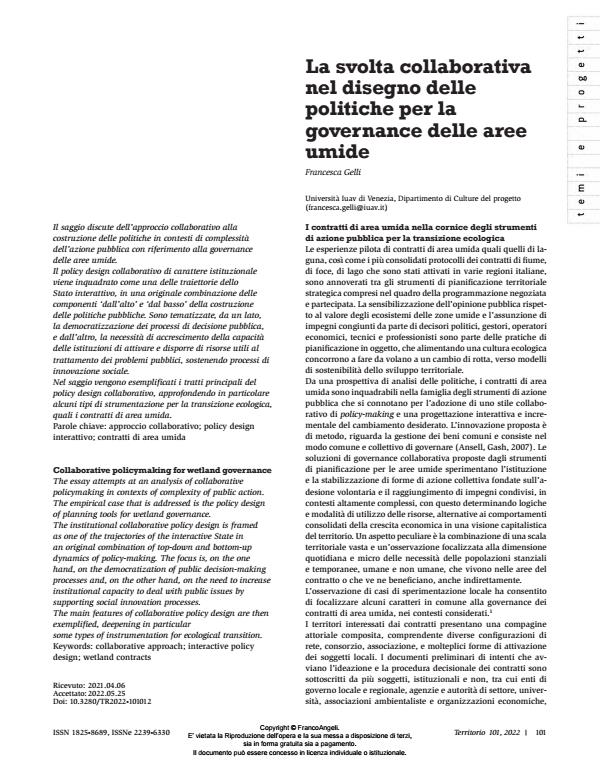Collaborative policymaking for wetland governance
Journal title TERRITORIO
Author/s Francesca Gelli
Publishing Year 2023 Issue 2022/101
Language Italian Pages 6 P. 101-106 File size 136 KB
DOI 10.3280/TR2022-101012
DOI is like a bar code for intellectual property: to have more infomation
click here
Below, you can see the article first page
If you want to buy this article in PDF format, you can do it, following the instructions to buy download credits

FrancoAngeli is member of Publishers International Linking Association, Inc (PILA), a not-for-profit association which run the CrossRef service enabling links to and from online scholarly content.
The essay attempts at an analysis of collaborative policymaking in contexts of complexity of public action. The empirical case that is addressed is the policy design of planning tools for wetland governance. The institutional collaborative policy design is framed as one of the trajectories of the interactive State in an original combination of top-down and bottom-up dynamics of policy-making. The focus is, on the one hand, on the democratization of public decision-making processes and, on the other hand, on the need to increase institutional capacity to deal with public issues by supporting social innovation processes. The main features of collaborative policy design are then exemplified, deepening in particular some types of instrumentation for ecological transition.
Keywords: collaborative approach; interactive policy design; wetland contracts
Francesca Gelli, La svolta collaborativa nel disegno delle politiche per la governance delle aree umide in "TERRITORIO" 101/2022, pp 101-106, DOI: 10.3280/TR2022-101012